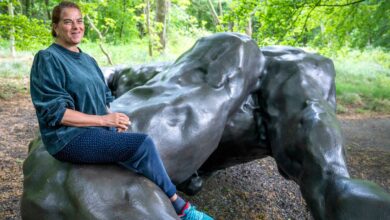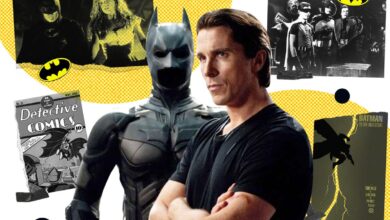What it feels like to ride up a Tour de France mountain

Alpe d’Huez is brtual. No, it’s not the longest climb in the world, nor is it the steepest, but it is relentless. It is 14.4km long and 1100m high and has an average gradient (or steepness) of around 7.9 per cent – a flat road being 0 per cent.
To put that into context the highest climb in the UK, the Cairnwell Pass in Scotland, is just 670m high, 8.2km long and has an average slope of 4 per cent. Suffice it to say, I had never ridden anything like Alpe d’Huez before and if I’m honest with myself, I did basically no training. This was going to hurt.
Halfway up the mountain, sweat dripping on my sunglasses, I look up from my bicycle handles and see the alps spread out beside me, sharp blue ridges in the distance beneath what few clouds there are in the sky. The tops of the very tallest peaks are brushed with white snow. Yet all I can think about was finding a place to stop pedalling.
I’d been riding for over 30 minutes and my legs were tight. But there was nowhere reasonable to stop and, anyway, I wanted to get to the top without stopping. The problem when you stop once is that it makes it easier to stop again and again and again. I look up the mountain, at the winding road. The end was in sight, but so very far away, so very high up. I looked around for a place to stop.
Bourg-d’Oisans is a small village at the foot of the Alpe d’Huez, an 1,800m mountain which operates as a ski resort in the winter and a cycling mecca in the summer. There are a few restaurants and bars in the village, and on the day we passed through they were all busy with people watching the Tour de France on TV with cold, golden beers. It was sunny and warm, and Europe was entering the July heatwave. The cycling pilgrims sought shade and left their bikes outside the bars leaning against each other in the sunlight.
It already felt like a festival, and yet the Tour de France was not to pass onto the mountain until the following day. But in order to get a good spot in the village, or on the road snaking up the mountain, one had to arrive early. This was helped by the fact that on the next day, not only would the cyclists climb the famous mountain, but it was also Bastille Day, a national holiday in France, the anniversary of the Storming of the Bastille.
We arrive in the morning in Geneva and drive down to a lake near the village. There is a fair breeze across the lake and it is cool, but as we set out on the bikes, and pass through the Bourg-d’Oisans, the wind dies off and the heat picks up.
“It’s just on the other side of this village,” says one of the guys riding with me. “Then we start to climb!”
We cycle across a bridge with the Romanche river gentle below us, and I see the mountain looming ahead of us. We follow a fork in the road, where the tarmac begins to raise and then we begin to ascend the mountain.
Alpe d’Huez has been a part of the Tour de France since 1952 when it was first won by Italy’s legendary Fausto Coppi. It has been used as a stage finish regularly since 1976, in part thanks to its 21 hairpin corners which caress the mountainside. Its maximum gradient is about 13 per cent –which you meet early on the road – but once you are past that brutal slope the rest is an almost everpresent 7-8 per cent. It may not be the most difficult climb in cycling, but it is one of the hardest the alps have to offer. It is a climb every professional cyclist will think about and certainly one every climber in the Tour de France wants to win on.
On the first roads of the climb, there are already 15 or so cyclists around me, all slowing to a walking pace. As the road ramps up, I slip into the smaller, easier front chainring and down some gears at the back. It is steep here in the early kilometres. Knowing they are to be the toughest of the climb I try not to attack too hard, I have a long way to go. The record on the mountain, depending on who you ask, is held by the late, master Italian climber Marco Pantani – known as The Pirate – who rode the mountain in 37 minutes and 35 seconds in 1997. A very good amateur might hope to do it in an hour. On the day I rode it, I would be happy to finish it without stopping – but the closer to the hour the better.
The truth is, while I am a keen cyclist, I had ridden little before going up Alpe d’Huez. Two small, flat rides around Suffolk in the two months before, in fact. But I believed that this would be more mind over matter, and besides, I was riding one of the best bikes money can buy (on loan): The BMC Teammachine SLR Masterpiece, a fully carbon beast, weighing just 6.5kg and costing somewhere in the region of £20,000. If I’m going to make it up the mountain on any bike, this is it.
The smell of pine is strong from the trees, and the heat still wraps me in its unforgiving embrace. It isn’t long before I’m panting and sweating. I unzip my jersey and wipe my brow. “I just need to get through those first three or so kilometres”, I think, settling back on the saddle and relaxing my arms and legs as best I can.
I pass a few people spinning their legs as quick as they can, and keep on going, cars snaking their way past me, closely, on their own way to the top of the mountain. I look down at the rear gears hoping there is one more gear to use – anything to make things easier. There is none. I shift down anyway just in case, but there is no movement. Two kilometres in and I’ve already used all my gears.
We come to the fourth hairpin and the road flattens, briefly but mercifully before the climb begins again. I see a dead butterfly on the tarmac and think it an unwelcome omen.
A masterpiece bike to ride a masterpiece mountain
I reach down for my water bottle as we approach the next hairpin and the road flattens out a little. The water is warm but good and I drop the bottle back in the cage and glance up at the suffering faces around me, others tackling the mountain, sweat dripping on their handlebars and bike frames, struggling even to move the pedals round in circles.
I take some comfort in that – I don’t feel as bad as they look, I think, and it gives me a boost. I push out of my saddle and tread on the pedals, with some effort my bike is now moving left to right in a comforting elliptical rhythm and soon I’m at the next hairpin. As if answering my thoughts, the road eases and this time it doesn’t rise up again. A merciful stretch of around 5 per cent which almost feels like riding on flat ground after the first 4km. I shift up a couple of gears and start to enjoy it.
The air is cooler here, above the trees. I see someone up ahead of me. A man in his 40s wearing all blue Lycra and circling his pedals quickly, I up my pace and close the gap to him, starting to feel good. I’m close enough to smell him as he flicked sweat off his face with his hand and I look to pass him on his left, but turn my head and see a car attempting the same, I put the brakes on lightly so as not to crash into either the bike or car, and I steer to the right – into a large pothole. I immediately have to unclick my feet from the pedals and put a foot on the ground. At that slow speed and that steep gradient, there was no way I was getting over the deep(ish) ledge of the pothole. But now I’m on a steep road and had to somehow get back cycling. What an idiot.
I manage to get back pedalling but my rhythm is gone. I can still see the man in blue up ahead and want to catch him, but my small stop has killed the momentum I had.
I see someone up ahead of me. A man in his forties wearing all blue Lycra and circling his pedals quickly, I up my pace and close the gap to him, starting to feel good
The air was cooler above the trees on Alpe d’Huez





